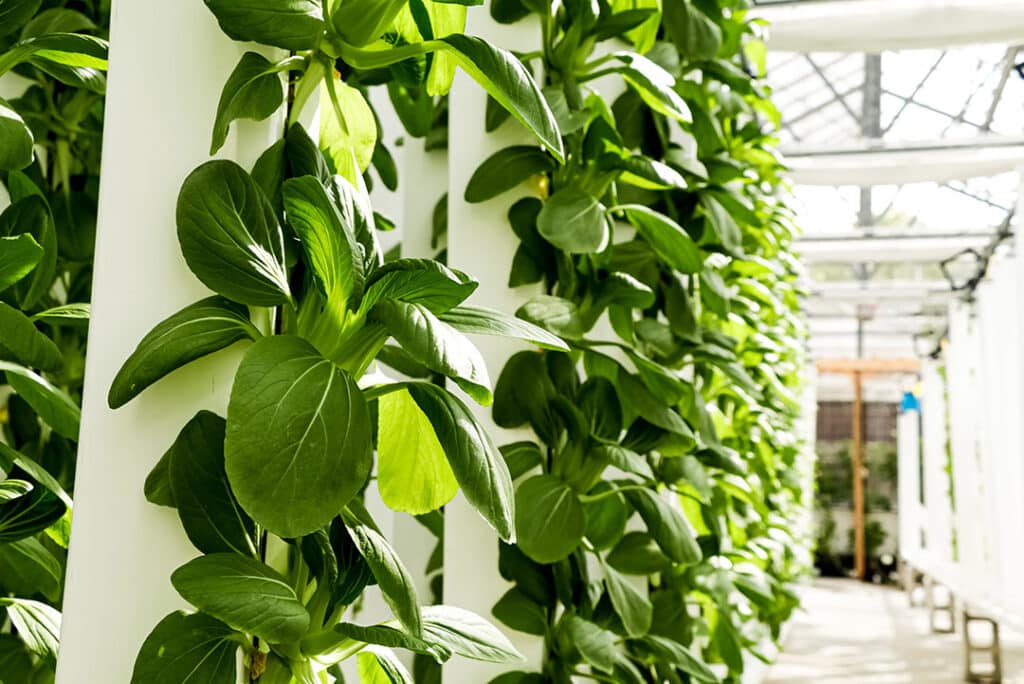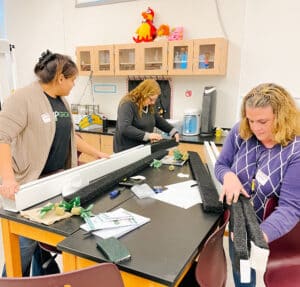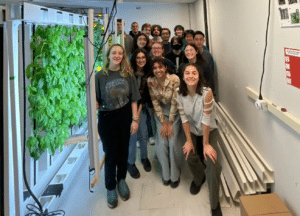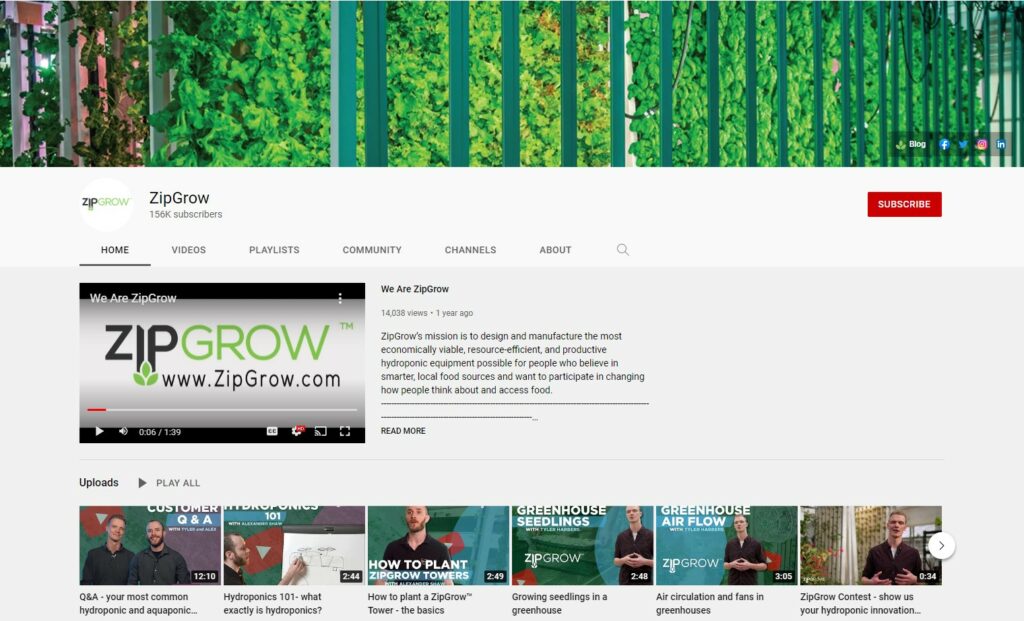It’s such a bummer when the fruits we purchase turn out to be bland and unexciting. It’s common knowledge that sometimes they’re picked way too early just to keep them fresh for longer, which limits them to reach their fullest flavor potential.
Isn’t it amazing to think that by localizing food production, we can reduce the long transport times and ensure the best growing conditions for our vegetables? Supermarkets sometimes source veggies from faraway lands, but now we know the importance of keeping things closer to home. Crops can easily lose half or more of their nutrients within the first 10 days of harvest.
Grow fresh, no matter the seasons
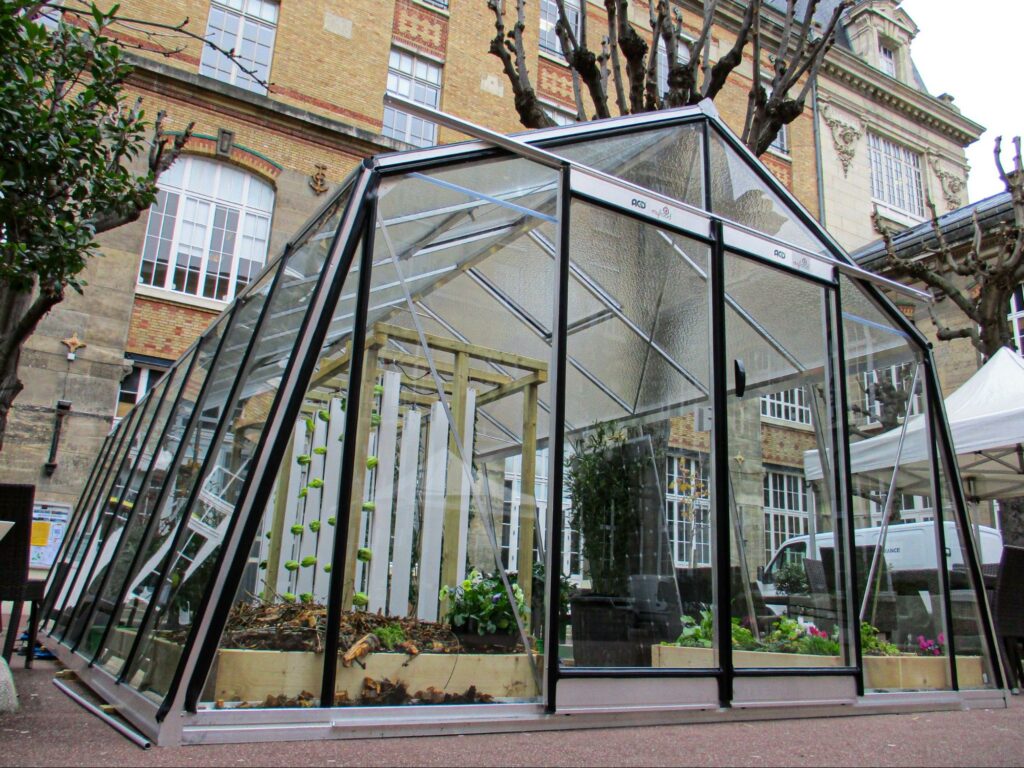
The greenhouse for ESCP Business School in Paris with a ZipGrow Towers
Well, with the help of greenhouses, you can get ready to say hello to a world of vibrant and nutritious goodness!
Greenhouses are revolutionary because they allow for extended growing seasons. Greenhouses provide a closed environment that can adjust growing conditions based on what is being grown. They thereby allow for year-round cultivation of crops, which is hard to achieve in the open field. It means that instead of relying on produce flown in from California, you can enjoy fresh, locally grown winter vegetables right in your own community.
How do greenhouses play magic exactly? The answer is controlled environments. They provide an enclosed space where temperature, humidity, and other environmental factors can be regulated. Greenhouses act as a shield against harsh weather conditions and are designed to trap heat inside to keep the inside warm.

You may be familiar with the greenhouse effect affecting our planet, but for plants, the greenhouse effect occurs when sunlight enters through the transparent walls of a greenhouse and is absorbed by the plants and soil inside. As the objects inside the greenhouse warm up, they release infrared radiation that is trapped by the greenhouse walls.
It is possible to adjust the amount of light for different crops by using various types of glass or membrane to meet their specific lighting requirements.
Besides a fresh salad, what else does food localization offer?
We all agree local food is simply amazing. The flavor and quality are unmatched, but there are so many other benefits to keeping food production local.
A crucial benefit of food localization is the reduction of dependence on distant and often vulnerable supply chains. It ensures more reliable access to fresh and nutritious produce, especially during times of disruptions in national or international trade.
The COVID-19 pandemic left a lasting impact and most of us still recall the lockdowns, travel restrictions, and social distancing measures. The disruptions of the pandemic not only affected people’s lives but also had a significant impact on global and local food supply chains.
It’s possible that food insecurity might be closer to you than you think. As a result of labor shortages, transportation bottlenecks, and reduced access to markets, agricultural production suffered, leading to reduced food availability and higher prices in some regions. A survey conducted by the Agricultural & Applied Economics Association shows that 80% of the households that reported food insecurity, most of which are from the urban area, were actually above the poverty level before the pandemic hit.
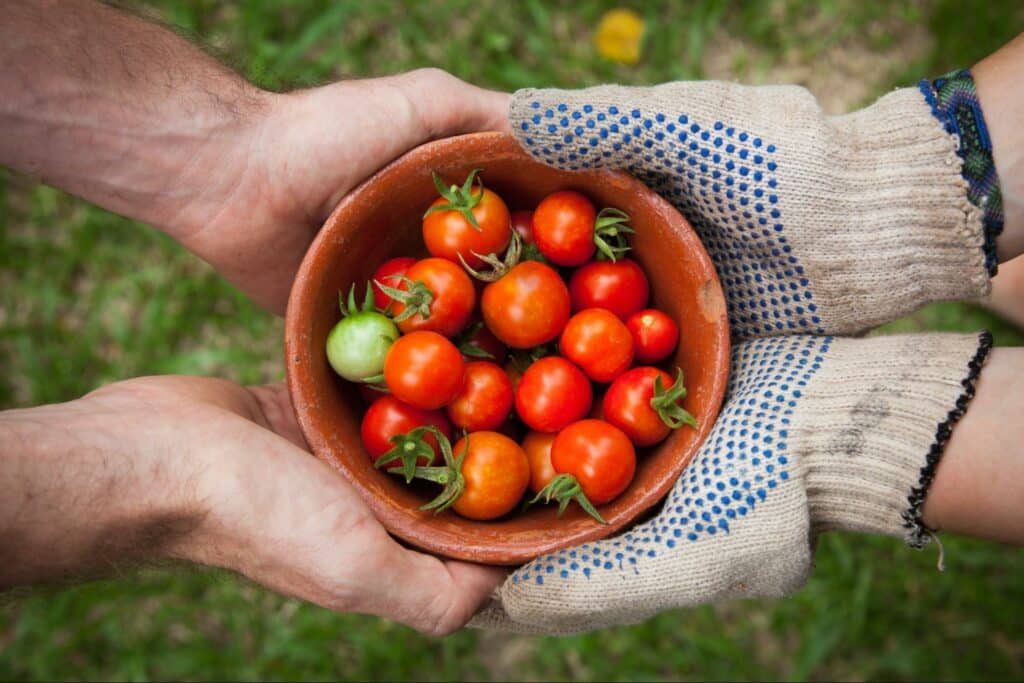
Greenhouse farming has the added benefit of being able to produce food year-round, regardless of the natural climate. This means growers can harvest fresh food at all times.
It’s worth considering that food insecurity extends beyond just limited access to food. It can also include food that may not offer optimal nutritional value or taste. Growing in greenhouses with hydroponic systems provides precise control over water, nutrients, and light. This efficiency minimizes water wastage and nutrient runoff while optimizing plant growth and limiting operating costs.
Opting for produce from local greenhouses can help ensure that you’re getting the most out of your food in terms of nutritional content. Don’t forget your fruits and veggies are harvested at the peak of ripeness too!
Food localization in greenhouses: a real example
It can be challenging for people living in Canada’s remote regions to afford fresh food, especially with rising prices resulting from supply chain disruption and inflation. However, there is a non-profit organization called Green Iglu that is working to address this issue. Their goal is to create secure areas for communities in these regions to grow fresh produce using greenhouses.
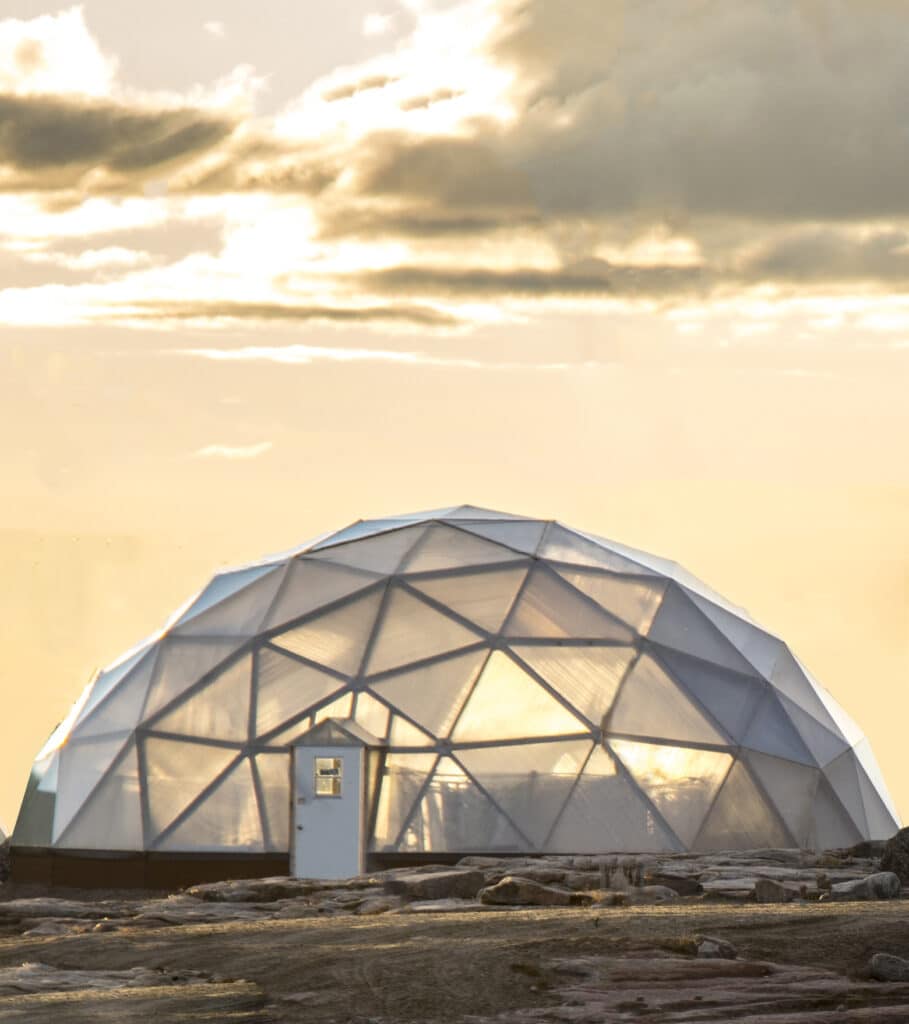
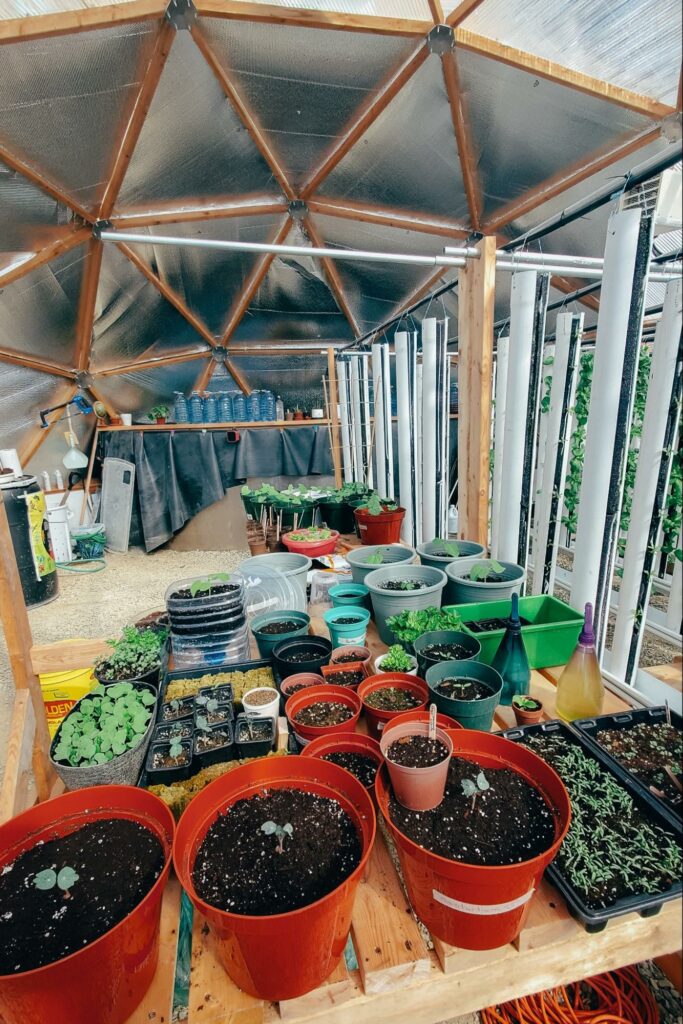
The Green Iglu’s Growing Dome houses hydroponic growing systems, including ZipGrow Towers.
Green Iglu’s Growing Dome® provides a flexible, year-round space that can withstand harsh Canadian winters with 7ft of snow and wind speeds over 180km/hr.
The dome contains various hybrid growing systems, including raised soil beds, hydroponic units, and hanging planters. Soil beds are ideal for producing hearty vegetables like potatoes and carrots, while hydroponic ZipGrow Towers yield fresh and healthy greens.
Their projects are able to supply year-round fresh produce for locals, restaurants, vendors, and daycares. Additionally, the greenhouses also offer young community members education and the opportunity to learn about food security, traditional soil-growing methods, and hydroponics.
Green Iglu Case Study
What about urban areas?
Greenhouses are also valuable to densely populated cities that often face challenges with food deserts.

Except for longer growing seasons and reduced food miles, greenhouses offer the potential for vertical farming, which can have longer growing seasons and reduce the need for large land areas. Unlike traditional farming methods that require significant horizontal space, vertical farming allows for multiple layers of crops to be grown on top of one another. This makes it possible to produce more food in a smaller footprint, which is especially important in limited urban spaces.
Vertical systems such as ZipGrow Towers offer improved light distribution to lower plants, guaranteeing they all get the light they need. These systems allow for easier crop access too, simplifying maintenance and harvesting tasks.
Urban greenhouses can create a sense of community and encourage residents to participate in producing and distributing food. They can serve an educational purpose, teaching residents about farming and sustainable agriculture practices, which empower individuals to grow their own food and make healthier dietary choices.

